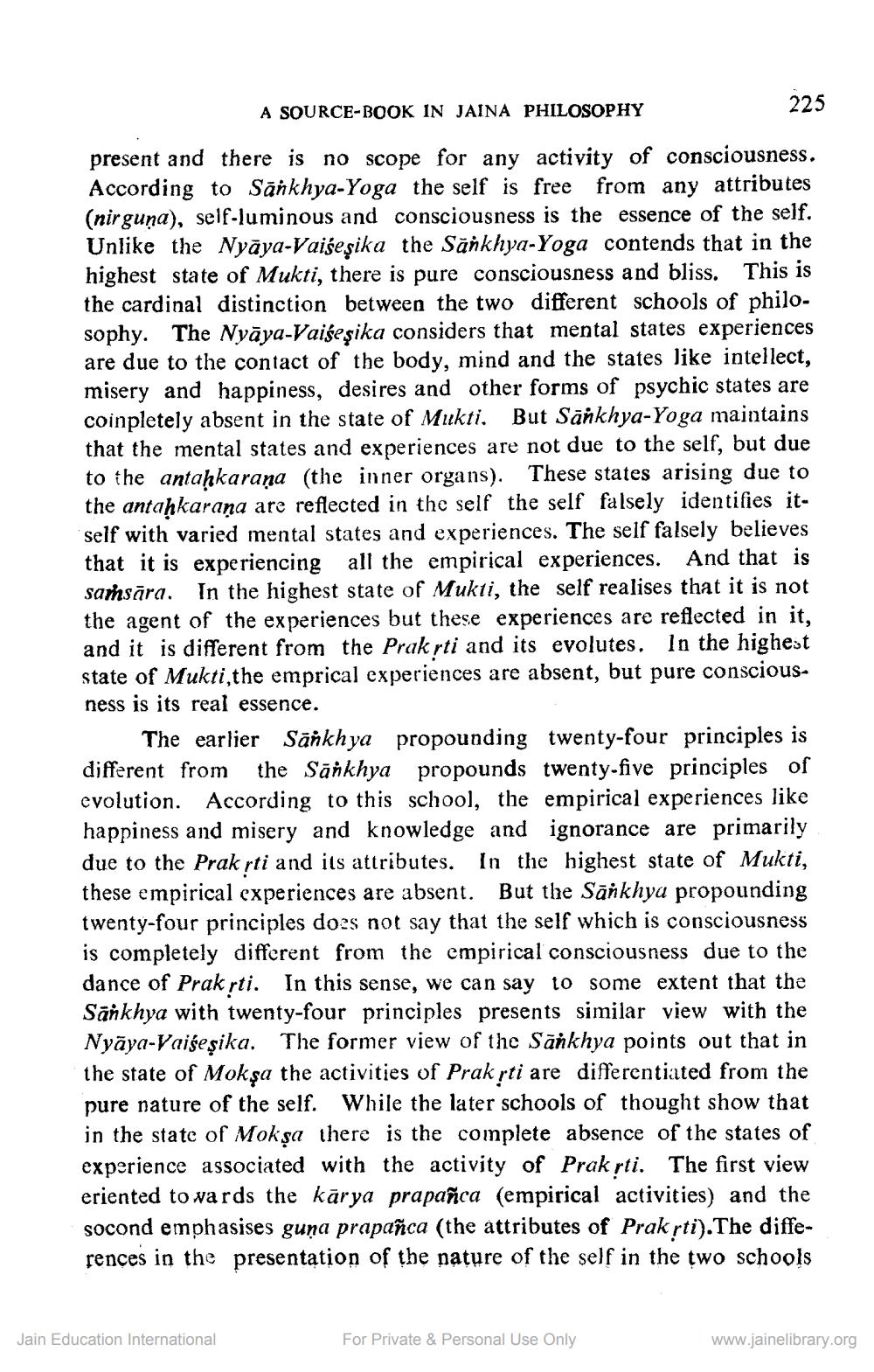________________
A SOURCE-BOOK IN JAINA PHILOSOPHY
225
present and there is no scope for any activity of consciousness. According to Sānkhya-Yoga the self is free from any attributes (nirguņa), self-luminous and consciousness is the essence of the self. Unlike the Nyāya-Vaiseșika the Sänkhya-Yoga contends that in the highest state of Mukti, there is pure consciousness and bliss. This is the cardinal distinction between the two different schools of philosophy. The Nyāya-Vaiệeşika considers that mental states experiences are due to the contact of the body, mind and the states like intellect, misery and happiness, desires and other forms of psychic states are coinpletely absent in the state of Mukti. But Sankhya-Yoga maintains that the mental states and experiences are not due to the self, but due to the antaḥkaraņa (the inner organs). These states arising due to the antahkarana are reflected in the self the self falsely identifies itself with varied mental states and experiences. The self falsely believes that it is experiencing all the empirical experiences. And that is samsāra. In the highest state of Mukti, the self realises that it is not the agent of the experiences but these experiences are reflected in it, and it is different from the Prak rti and its evolutes. In the highest state of Mukti,the emprical experiences are absent, but pure conscious. ness is its real essence.
The earlier Sānkhya propounding twenty-four principles is different from the Sānkhya propounds twenty-five principles of evolution. According to this school, the empirical experiences like happiness and misery and knowledge and ignorance are primarily due to the Prak rti and its attributes. In the highest state of Mukti, these empirical experiences are absent. But the Sānkhya propounding twenty-four principles does not say that the self which is consciousness is completely different from the empirical consciousness due to the dance of Prak rti. In this sense, we can say to some extent that the Sānkhya with twenty-four principles presents similar view with the Nyāya-Vaiseșika. The former view of the Sānkhya points out that in the state of Moksa the activities of Prak rti are differentiated from the pure nature of the self. While the later schools of thought show that in the state of Mokșa there is the complete absence of the states of experience associated with the activity of Prakrti. The first view eriented towards the kārya prapanca (empirical activities) and the socond emphasises guņa prapanca (the attributes of Prakrti).The differences in the presentation of the nature of the self in the two schools
Jain Education International
For Private & Personal Use Only
www.jainelibrary.org




